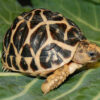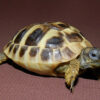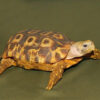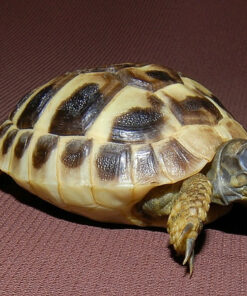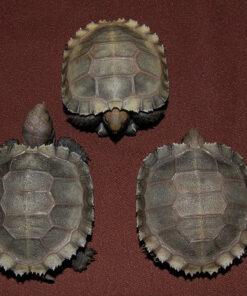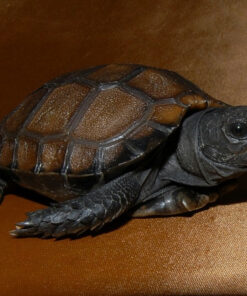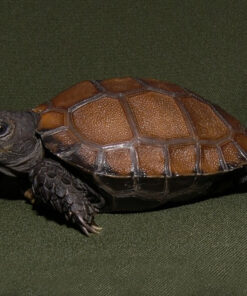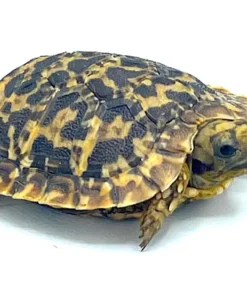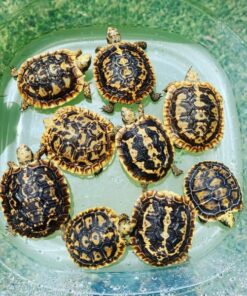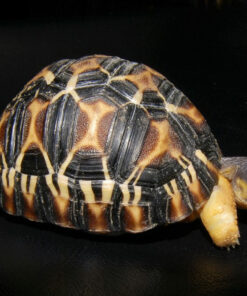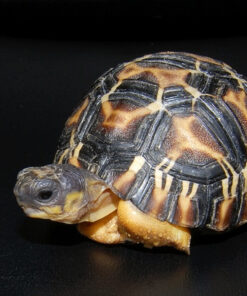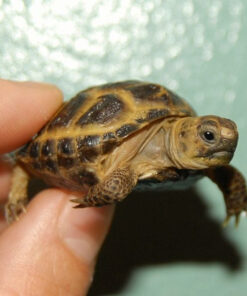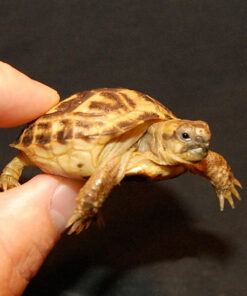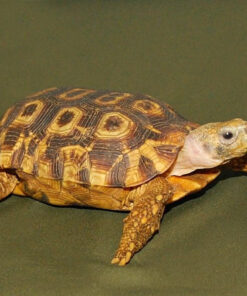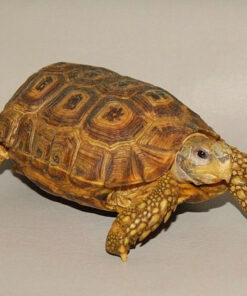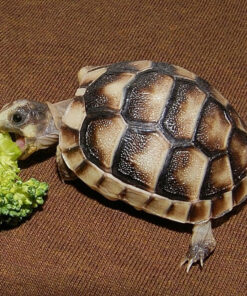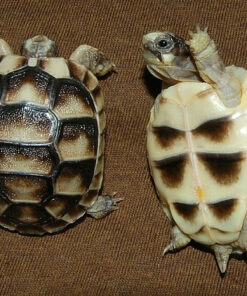$159.99
Whether you’re looking for a hingeback tortoise for sale or already own one, providing the right enclosure, diet, and veterinary care will help your
Hingeback Tortoise for Sale: The Ideal Exotic Pet for Tortoise Lovers
Searching for a unique, low-maintenance tortoise with loads of personality? Meet the Hingeback Tortoise, a gentle reptile known for its distinct shell and calm demeanor. Whether you’re a first-time tortoise owner or a seasoned reptile enthusiast, Hingeback Tortoises are captivating, hardy pets that bring charm and curiosity to any space. Let’s dive into why Hingeback Tortoises make fantastic companions, how to care for them, and what you can expect from this amazing pet.
Why Choose a Hingeback Tortoise?
Hingeback Tortoises, originally from Africa, are famous for the “hinge” on their shells that can close to protect their back legs—a truly unique feature. Here are a few reasons why these tortoises are beloved by reptile enthusiasts:
- Distinctive and Charming Look: Hingebacks have a high-domed shell with that unique hinged rear section. This feature isn’t just functional; it also makes them stand out in the tortoise world.
- Easygoing Nature: Known for their calm and gentle personalities, Hingeback Tortoises are patient and tend to become comfortable with their owners over time.
- Manageable Size: Reaching around 8-12 inches in length, they’re perfect for both indoor and outdoor enclosures, making them versatile and manageable compared to larger tortoise species.
With these traits, Hingeback Tortoises are the perfect choice if you’re looking for a low-maintenance pet that’s both exotic and easy to care for.
How to Set Up a Hingeback Tortoise Habitat
Creating the right environment for your Hingeback Tortoise is essential for its well-being. Whether you plan on setting up an indoor or outdoor enclosure, here’s how to make the space ideal for your new pet.
1. Setting Up the Enclosure
- Space Requirements: Hingebacks are active explorers, so they’ll need space. A 4×2-foot indoor setup is ideal, while outdoor enclosures can be larger to allow for more movement.
- Temperature and Humidity: Native to warm, humid climates, Hingebacks do best with a daytime temperature between 75-85°F and humidity levels of 70-80%. Nighttime temperatures can dip slightly but should stay around 65°F.
- Substrate: Use moisture-retaining substrates like coconut coir or cypress mulch to maintain high humidity. Adding sphagnum moss or even a water dish can help keep the enclosure’s humidity stable.
- Hiding Spots and Decor: Hingebacks appreciate hiding spots to retreat and feel safe. Small shelters, rocks, and even some plants can create a comforting environment that mimics their natural habitat.
2. Heating and Lighting Requirements
Hingebacks thrive with consistent heat and proper lighting to keep their shells healthy and strong.
- UVB Light: Like most reptiles, Hingebacks need UVB light to metabolize calcium effectively and prevent shell issues. Use a UVB bulb for about 10-12 hours a day to simulate natural sunlight.
- Heat Lamp: A heat lamp to create a basking spot around 85-90°F will allow them to warm up as needed. Be sure to set up a cooler area within the enclosure for temperature regulation.
With these basics in place, you’ll have a cozy, well-balanced environment for your Hingeback Tortoise.
Feeding and Caring for Your Hingeback Tortoise
A balanced diet is essential for a healthy Hingeback Tortoise. Unlike some other tortoise species, Hingebacks are omnivores, which means they need a mix of plants and protein sources.
1. Diet and Nutrition
Here’s what to include in your Hingeback’s diet:
- Leafy Greens and Vegetables: Offer dark leafy greens like dandelion greens, collard greens, and turnip greens. Other vegetables, like squash and carrots, also add beneficial nutrients.
- Fruits in Moderation: Occasionally offer small servings of fruit like berries or melon, but keep it limited as excessive fruit can cause digestive issues.
- Protein Sources: Hingebacks benefit from animal protein, which is unique for a tortoise. You can provide small amounts of insects like earthworms, mealworms, or snails once a week.
- Calcium and Supplements: Dusting their greens with a calcium supplement two to three times per week helps maintain shell health, and a multivitamin once a week can provide additional support.
2. Health and Behavior
Monitoring your Hingeback’s health and behavior is key to ensuring a long, healthy life.
- Appearance: A healthy Hingeback should have a smooth, firm shell and clear eyes. If you notice any soft spots or irregularities, it may indicate a dietary or humidity issue.
- Behavior: Hingebacks are typically active and curious, especially around feeding time. If your tortoise seems lethargic, loses its appetite, or hides excessively, it could signal a health concern.
- Routine Vet Checks: Regular vet visits are a good idea, particularly if you notice signs of illness like nasal discharge or a soft shell. Routine check-ups help catch any health issues early.
With proper care, Hingeback Tortoises can live for 20 years or more, making them a long-term companion.
Final Thoughts: Welcome a Hingeback Tortoise into Your Life
With their gentle nature, unique shell structure, and easy care requirements, Hingeback Tortoises make wonderful exotic pets. Whether you’re new to reptiles or a seasoned collector, these tortoises are a joy to care for and a fascinating addition to any home. At [Your Website Name], we’re here to help you every step of the way—from choosing the right Hingeback Tortoise to setting up the perfect habitat. Start your journey today and welcome this charming, exotic reptile into your life!
Related products
TORTOISE for sale
TORTOISE for sale
burmese brown mountain tortoise for sale | #1 best price in USA
TORTOISE for sale
TORTOISE for sale
Baby Pancake Tortoise for Sale – Exotic Pet with Unique Shell
TORTOISE for sale
TORTOISE for sale
TORTOISE for sale
Baby Marginated Tortoise for Sale – Adopt the Perfect Exotic Pet

